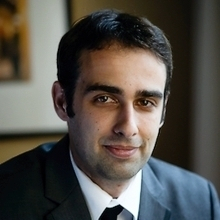David Rudko
Assistant Professor, Department of Biomedical Engineering, Department of Neurology/Neurosurgery

Research in our lab is focused on the application of novel MRI methodology in conjunction with biophysical modeling to augment the current understanding of brain anatomy and physiology. In neurological disease, the interplay between sub-voxel, cellular-level components such as microglia and axons executes a critical role in determining disease onset and progression. To investigate these features, our lab utilizes both small animal (7 T) and human MRI/MRS (3 T, 7 T) in conjunction with optical microscopy and advanced image processing methods. In particular, we develop MRI physics acquisition and post-processing techniques for mapping myelin density, axonal packing and axonal geometry. To improve existing models, we use numerical, magnetostatic/tissue relaxation simulation models based on the cell-level geometries observed from human brain histology images. An ultimate goal is to extend magnetic susceptibility and relaxometry-based MRI models of brain tissue microstructure to develop atlases applicable to neurological disease.
Equally relevant, our lab also focuses on the advancement of physics, signal processing and hardware methodology for ultra-high field (UHF, > 3T) MRI. The current breadth of application of UHF MRI to neurological diseases represents only the tip of the iceberg. The challenge moving forward will be to leverage advanced MRI physics techniques, primarily developed at 3 T, for use with 7 T MRI. This requires addressing several critical challenges associated with UHF MRI. First, the decreased radiofrequency (RF) field wavelength associated with UHF MRI requires consistent mapping of the transmit RF field (B1+). Secondly, UHF MRI is associated with increased static magnetic field inhomogeneities (B0 effects). A consequent motivation in our lab is to advance techniques related to (a) RF field homogenization (static and dynamic B1+ shimming methods) and (b) B0 shimming (B0 field mapping, gradient Z-shimming and multi-coil shim arrays).
